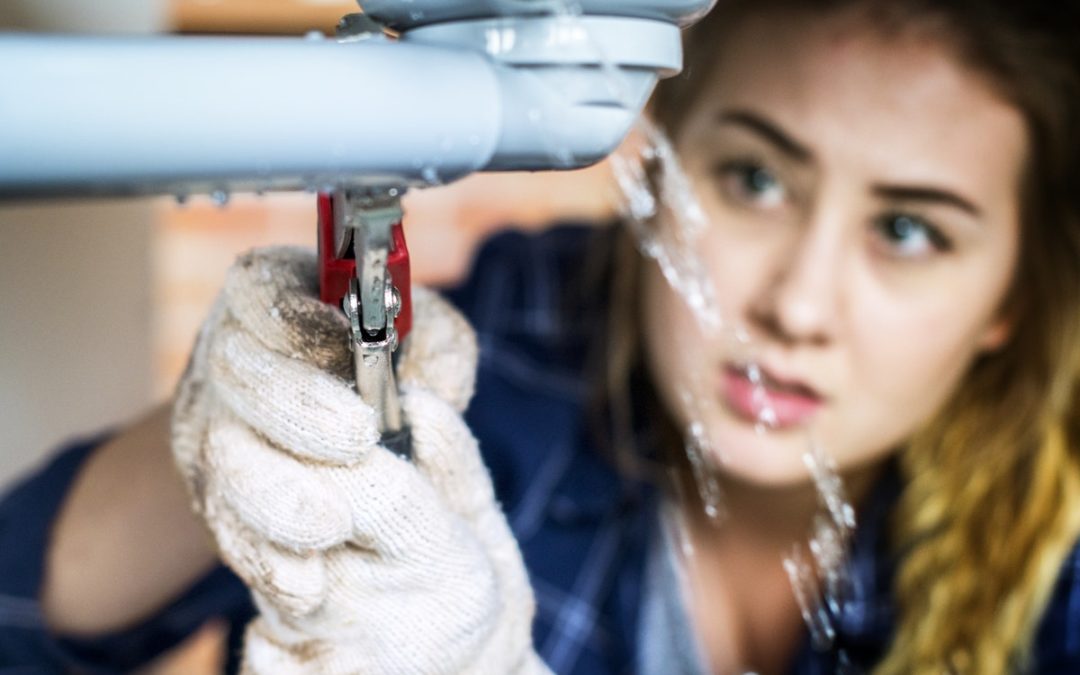Water intrusion and the subsequent damage it can cause (commonly referred to in the insurance industry as “water loss”) can occur at any time. While the rainy season in the greater Puget Sound region tends to strike fear in those with an older roof or less than perfect siding, the truth is, a water loss incident is not always triggered by high levels of rain or bad weather. And if you happen to live in a condominium or townhome with shared or common walls, your likelihood of experiencing a water loss incident rises.
There are number of common water loss issues that we tend to see over and over within community associations: 1) internal unit components such as a hot water heater, dishwasher, or washing machine leaks and causes flooding and damage to the unit in which it is located and the surrounding units; 2) common area pipes located between the walls burst and/or leak causing damage to common area and surrounding units; and 3) leaking common area roofs and/or siding cause damage to common areas and units. By no means is this a comprehensive list. No matter the type of water loss you may experience, the subsequent “clean up” is never pleasant and can often times result in temporary displacement from your home, unplanned out-of-pocket costs, and complex communications with your insurance company, neighbors, and/or your Association.
WHAT DO YOU DO NOW THAT THE WATER LOSS HAS OCCURRED?
- Report the loss to the Association immediately! Whether or not the water emanated from your home, a neighbor’s home, or a common area, keeping communication open with your Association will undoubtedly help you get your home fixed in a timelier manner. In addition, open communication will help you in keeping track of how the Association is managing the water loss on their end.
- Read your governing documents! The governing documents will dictate how the Association is to respond to damage to the building(s) and/or common areas, such as the timing of required notice to the Association members and how and when to tenderi a claim to its insurer.
- Communicate with neighbors. If the water loss emanated from a neighbor’s home, try to keep your communication open with that neighbor, as well as the Association. Make sure your neighbor is reporting the water loss to their homeowner’s insurance, if necessary.
- Report the water loss to your homeowner’s insurance. In particular, if the water loss emanated from your home AND/OR you are displaced from your home due to the severity of the water loss, your homeowner’s insurance should be involved.
- Stay involved when it comes to hiring contractors to repair the damage. The more involved you are the more likely your home will be repaired in the manner that is satisfactory to you.
WHO PAYS FOR WHAT?
The age-old question when it comes to living in a community association that has shared common area is “who pays for what?” While your governing documents and the applicable state statutes provide significant guidance on deciphering what is a “Common Area” (maintained by the Association) and what are the “Lot/Unit Boundaries” (maintained by the individual owner), there is often ambiguity found amongst the definitions of each, leaving owners and their Associations in dispute over who pays for what. Often times, the Association will leave it up to the insurance company to dictate what they will or will not cover. Sometimes, the Association will try to force you, as the unit owner to bear the brunt of the repairs, even when it appears to be a water intrusion coming from the common areas.
Water loss events often result in an intense and painstaking level of remediation that is unlike other damage that a building or home can incur. Such remediation should include: 1) removal of wet surfaces (i.e. drywall, flooring, cabinetry); 2) a drying out process in which industrial fans/heaters are placed in the space for a couple of days to dry out the area; 3) asbestos testing, especially in older buildings; 4) mold and/or air quality testing; and 5) the demolition and repair work necessary to get the home back to pre-water loss condition. The costs of doing this work can be very high. If asbestos and/or mold are found to be present, the costs go up dramatically. As such, it is important to understand what should be covered by the Association’s insurance and what should be covered under your homeowner’s insurance. This way, you don’t get stuck with out-of-pocket costs that are unaffordable.
WHY HIRE AN ATTORNEY?
Often times communication between owners and the Association will break down during or after a water loss incident has occurred, leading to frustration, unwillingness to cooperate, and anger from all involved. While hiring an attorney at the time of experiencing a water loss may not seem like an expense that you should have to bear, in a time of great stress, having a professional completely on your side may be exactly what you need to move the matter forward. Our office has expertise in communicating with Associations, neighbors, and insurance companies, in an effort to negotiate a better outcome for our clients. Our goal is to get your home back to a condominium. townhome, or single family home in its pre-water loss condition as quickly as possible so that you can focus on your day-to-day life.

Recent Comments